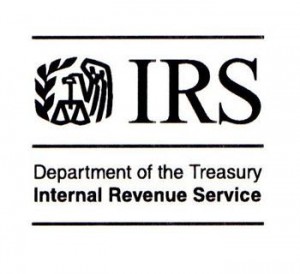The article (the full text of which is available only to Tax Notes subscribers) deals with the fact that the IRS failed to release two 2007 Technical Advice Memoranda (TAMs), which indicated that the annual contributions to a defined benefit plan under a deferred retirement option plan (“DROP“) will be treated as a contribution to a separate defined contribution plan (and thus subject to an annual additions limitation) if the contribution is credited with actual plan earnings. While this position was one we had taken in an article back in 1998, it apparently came as news to many local governments. The article also raises questions about the IRS authority to withhold release of TAMs.
Tag Archives: retirement
Carol V. Calhoun Quoted in Tax Notes Article, “Unreleased Technical Advice Memoranda Illuminate IRS Position on Pension Deferral Plans”
District Court: Pennsylvania Retirement Plan Must Recognize Canadian Same-Sex Marriage of Illinois Couple
(Posted on July 30, 2013 by Carol V. Calhoun)
 As described in a previous article, the Supreme Court’s recent decision in the Windsor case (which overturned the federal prohibition on recognition of same-sex marriages) has created a muddled situation in instances in which one or more relevant jurisdictions recognize same-sex marriage, but other(s) do not. The District Court for the Eastern District of Pennsylvania has now issued a decision that extends marriage rights in one such situation.
As described in a previous article, the Supreme Court’s recent decision in the Windsor case (which overturned the federal prohibition on recognition of same-sex marriages) has created a muddled situation in instances in which one or more relevant jurisdictions recognize same-sex marriage, but other(s) do not. The District Court for the Eastern District of Pennsylvania has now issued a decision that extends marriage rights in one such situation.
Detroit’s Bankruptcy Highlights Risks, Benefits of Governmental Pensions
(Posted on July 30, 2013 by Carol V. Calhoun)
 Detroit’s bankruptcy has brought to the fore issues faced by participants in underfunded public (governmental) retirement plans. As explained in an article on CNN, “Just how generous are Detroit’s pensions?”, Detroit’s pension promises as a whole are in line with pensions provided to nongovernmental workers in the area. Nevertheless, as CNN summarizes the situation, “Detroit’s workers and retirees face big cuts.” Why are public workers so vulnerable to the financial troubles of their employers?
Detroit’s bankruptcy has brought to the fore issues faced by participants in underfunded public (governmental) retirement plans. As explained in an article on CNN, “Just how generous are Detroit’s pensions?”, Detroit’s pension promises as a whole are in line with pensions provided to nongovernmental workers in the area. Nevertheless, as CNN summarizes the situation, “Detroit’s workers and retirees face big cuts.” Why are public workers so vulnerable to the financial troubles of their employers?
IRS Issues Guidance on Vesting Standards to Be Followed By Governmental, Church Plans
(Posted on July 15, 2013 by Carol V. Calhoun)
 We have just obtained a copy of an internal IRS memorandum issued a little over a year ago, describing the vesting standards the IRS will apply in reviewing determination letter applications by governmental retirement plans. A copy of it can be found at this link. The memorandum states that determination letters will not be issued unless governmental plans include vesting schedules at least as favorable as safe harbors set forth in the memorandum, which appear to be intended to preclude discrimination in favor of employees who are officers, shareholders, persons whose principal duties consist in supervising the work of other employees, or highly compensated employees. And while the memorandum was primarily directed toward governmental plans, it suggested that the same standards would apply to church plans.
We have just obtained a copy of an internal IRS memorandum issued a little over a year ago, describing the vesting standards the IRS will apply in reviewing determination letter applications by governmental retirement plans. A copy of it can be found at this link. The memorandum states that determination letters will not be issued unless governmental plans include vesting schedules at least as favorable as safe harbors set forth in the memorandum, which appear to be intended to preclude discrimination in favor of employees who are officers, shareholders, persons whose principal duties consist in supervising the work of other employees, or highly compensated employees. And while the memorandum was primarily directed toward governmental plans, it suggested that the same standards would apply to church plans.
District Court: QDRO Cannot Change Existing Beneficiary of Joint and Survivor Annuity
(Posted on June 11, 2013 by Carol V. Calhoun)
 It’s a plan administrator’s nightmare: John is married to Melissa, and designates her as beneficiary of his qualified joint and survivor annuity (QJSA). John and Melissa then get divorced, and the divorce decree says that John is awarded “as his sole and separate property” all rights
It’s a plan administrator’s nightmare: John is married to Melissa, and designates her as beneficiary of his qualified joint and survivor annuity (QJSA). John and Melissa then get divorced, and the divorce decree says that John is awarded “as his sole and separate property” all rights
Governmental Workers Retiring in Greater Numbers
(Posted on May 30, 2013 by Carol V. Calhoun)
 Both the federal and state governments are reporting increases in the pace of employee retirements in recent years. The causes are complex, including everything from a bulge of workers hired in the 1960s and now retiring to flattened public sector salaries and furloughs. However, in at least some instances, part of the motivation is that employees who have maxed out on their pensions may have a financial incentive to retire (or even find jobs in the private sector) in order to begin collecting retirement benefits.
Both the federal and state governments are reporting increases in the pace of employee retirements in recent years. The causes are complex, including everything from a bulge of workers hired in the 1960s and now retiring to flattened public sector salaries and furloughs. However, in at least some instances, part of the motivation is that employees who have maxed out on their pensions may have a financial incentive to retire (or even find jobs in the private sector) in order to begin collecting retirement benefits.
In some instances, the increasing pace of retirements may even be welcome. For governments facing budget shortfalls, they may result in opportunities to shrink the workforce, or at least to replace highly paid senior employees with junior employees paid at lower rates. However, in at least some instances, the surge in retirements has caused shortages in employees with much needed experience, and/or transitional issues when senior employees are not able to train more junior people before leaving.
Forbes: Rhode Island State Pension Admits History Of Kickbacks And SEC Inquiry
(Posted on April 30, 2013 by Carol V. Calhoun)
An article in Forbes magazine alleges that the Employees’ Retirement System of Rhode Island paid kickbacks to placement agents. As most are aware, the Employee Retirement Income Security Act of 1974 (ERISA) does not apply to governmental plans. So, what kinds of protections are available in the case of kickbacks from public retirement systems? Read more
New Revenue Procedure Establishes 403(b) Pre-Approved Plan Program
(Posted on April 29, 2013 by Carol V. Calhoun)
The IRS will start accepting applications for opinion and advisory letters for prototype and volume submitter 403(b) plans (tax-sheltered annuities and custodial accounts for certain tax-exempt and governmental employers) on June 28, 2013. Read more
IRS Directive Regarding Processing of Governmental Plans Determination Letter Applications with respect to Vesting Issues
(Posted on April 30, 2012 by Carol V. Calhoun)
MEMORANDUM FOR MANAGER, EP DETERMINATIONS
FROM: Mark O’Donnell, Acting Director, EP Rulings & Agreements
SUBJECT: Processing of Governmental Plans Determination Letter Applications with respect to Vesting Issues
Purpose: This memorandum sets forth procedures to be applied when reviewing the vesting provisions in determination letter applications for governmental plans (as defined in Section 414(d) of the Internal Revenue Code (Code». Pursuant to this memorandum, favorable determination letters may be issued with respect to current Cycle C and Cycle E determination letter requests for governmental plans that satisfy one of the safe harbor vesting schedules described in this memorandum. Current Cycle C and Cycle E determination letter requests for governmental plans that fail to satisfy any of these safe harbor schedules should be referred to Dan Jones or Robert Contreras of the Determinations Quality Assurance staff for further analysis and resolution.
Background: Section 401(a)(7) provides that a trust does not constitute a qualified trust under Section 401 unless the plan of which such trust is a part satisfies the requirements of Section 411. Section 411 prescribes rules relating to the accrual and vesting requirements for qualified retirement plans. Section 411(e)(1) provides that the provisions of Section 411, other than Section 411(e)(2), do not apply to a governmental plan within the meaning of Section 414(d). Section 411(e)(2) provides that a governmental plan is treated as meeting the requirements of Section 411, for purposes of Section 401(a), if the plan meets the vesting requirements resulting from the application of Sections 401(a)(4) and 401(a)(7) as in effect on September 1,1974.
Accordingly, a governmental plan that satisfies the vesting requirements of Sections 401(a)(4) and 401(a)(7) as in effect on September 1,1974 (the pre-1974 Code vesting requirements) is treated as satisfying section 411, including the rules in Section 411(a) through (d).
In 1972, the Service issued Publication 778, Guides for Qualification of Pension, Profit-Sharing, and Stock Bonus Plans (Pub. 778), a compendium of guidance relating to Code qualification requirements as then in effect for retirement plans. Pub. 778 summarized several revenue rulings relating to the vesting of benefits that were in effect before the enactment of the Employee Retirement Income Security Act of 1974 (ERISA) on September 2,1974. Part 5(c) of Pub. 778 states that “[v]arious [vesting] provisions are in use, ranging from complete and immediate vesting through different forms of graduated vesting (upon completion of stated service or participation requirements and/or reaching a specified age) to no vesting until attainment of normal or stated retirement age. Full vesting of an employee’s interest is then required.” Part 5(c)(1) of Pub. 778 states that the facts and circumstances of each case determine whether a plan’s vesting provisions satisfy the requirements of Section 401(a). In addition, Section 1.401-1(b)(3) of the Income Tax Regulations provides that a plan must meet the requirements in operation as well as in form (see also Part 5(j) of Pub. 778).
Part 5(c)(2) of Pub. 778, under the heading, Vesting on Retirement, states that a “plan will not be held to qualify if it fails to provide that an employee who has reached the normal retirement age (in case of a pension or annuity plan) or the stated age or other specified event has transpired (in the case of a profit-sharing or stock bonus plan) and has satisfied any reasonable and uniformly applicable requirements as to length of service or participation, is vested in the contributions made or benefits payable under the plan.”
In consultation with the Office of Chief Counsel, we have concluded that whether a governmental plan satisfies the pre-1974 Code vesting requirements depends on the plan’s vesting provisions (including the plan’s definition of normal retirement age and benefit commencement provisions), and that a governmental plan’s satisfaction of Section 411(e)(2) depends on both its form and operation.
We have included three safe harbor vesting schedules that we have determined, with advice from the Office of Chief Counsel, would satisfy the pre-1974 Code vesting requirements. It seems likely that the vesting schedules of most governmental plans are at least as favorable to participants as at least one of the safe harbor schedules. The safe harbor vesting schedules are:
- 15-year cliff vesting schedule: The plan provides that a participant is fully vested after 15 years of creditable service (service can be based on years of employment, years of participation, or other creditable years of service).
- 20-year graded vesting schedule: The plan provides that a participant is fully vested based on a graded vesting schedule of 5 to 20 years of creditable service (service can be based on years of employment, years of participation, or other creditable years of service).
- 20-year cliff vesting schedule for qualified public safety employees: The plan provides that a participant is fully vested after 20 years of creditable service (service can be based on years of employment, years of participation, or other creditable years of service). This safe harbor would be available only with respect to the vesting schedule applicable to a group in which substantially all of the participants are qualified public safety employees (within the meaning of Section 72(t)(10)(8)).
Plans with vesting provisions that are more favorable to participants than these safe harbor vesting schedules are also deemed to satisfy the pre-1974 Code vesting requirements. Examples of more favorable vesting provisions include full and immediate vesting, full vesting after 10 years of creditable service, and vesting based on a graded vesting schedule that phases to full vesting on completion of 15 years of creditable service.
These safe harbor vesting schedules apply only for purposes of satisfying the pre-1974 Code vesting rules relating to reasonable and uniformly applicable requirements as to length of service or participation as applied to governmental plans. The safe harbor vesting schedules do not apply for purposes of the vesting of employee contributions or on the termination of a plan. The full and immediate vesting of employee contributions and the full vesting of benefits upon termination of the plan are still required.
Procedures: Governmental plans with vesting provisions that result in the vesting of the employer-provided benefit at least as rapidly as under one of the safe harbor vesting schedules set forth in this memorandum are deemed to satisfy the pre-ERISA vesting rules. Favorable determination letters may be issued with respect to these plans if no other issues exist.
Governmental plans with vesting provisions that do not result in vesting at least as rapidly as under one of the safe harbor vesting schedules set forth in this memorandum may not be issued a favorable determination letter on the plan at this time. These plans should be referred to Dan Jones or Robert Contreras of the Determinations Quality Assurance staff for further analysis and resolution.
If you have any questions regarding this memorandum, please contact Sherri M. Edelman at 202-283-9587.
Distributions from a Pension Plan Under a Phased Retirement Program
(Posted on June 11, 2007 by Carol V. Calhoun)
The IRS has issued a copy of its long-awaited final regulations on the extent to which a pension plan can make distributions to an individual in the process of a phased retirement. A copy of the regulations can be seen by clicking here.
